The days are already getting longer and out birds are getting busy! At Decorah North, Mr. North and DNF are copulating, working on their nests, and chasing away intrepid squirrels. While we’re seeing some intruders, the snow cover has remained light and we’re not yet seeing the conditions that had migrating eagles locked down at the North nest last spring. We’re crossing our talons for a good year!
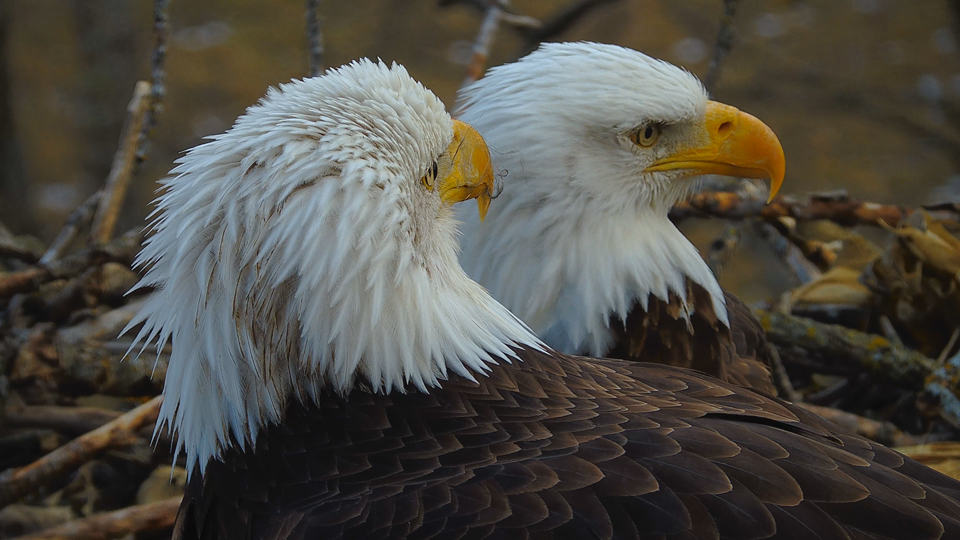 I’m kind of embarrassed to admit how many screenshots I downloaded from our camera operators and explore.org members today!
I’m kind of embarrassed to admit how many screenshots I downloaded from our camera operators and explore.org members today!
We’re also seeing a lot of nestorations at Xcel Energy’s Fort St. Vrain nest and falcons are either hanging around or passing through some of the urban nests we watch. Visit https://www.raptorresource.org/birdcams/xcel-energy-cams/ to check those nests out and please let me know if you get a band number – among other things, we’re trying to confirm whether Joe’l H/21 black/blue was the falcon I saw there today!
Thanks so much for watching, sharing, learning, and especially for caring as we enter our 14th year of live streaming and researching birds of prey.
Decorah North
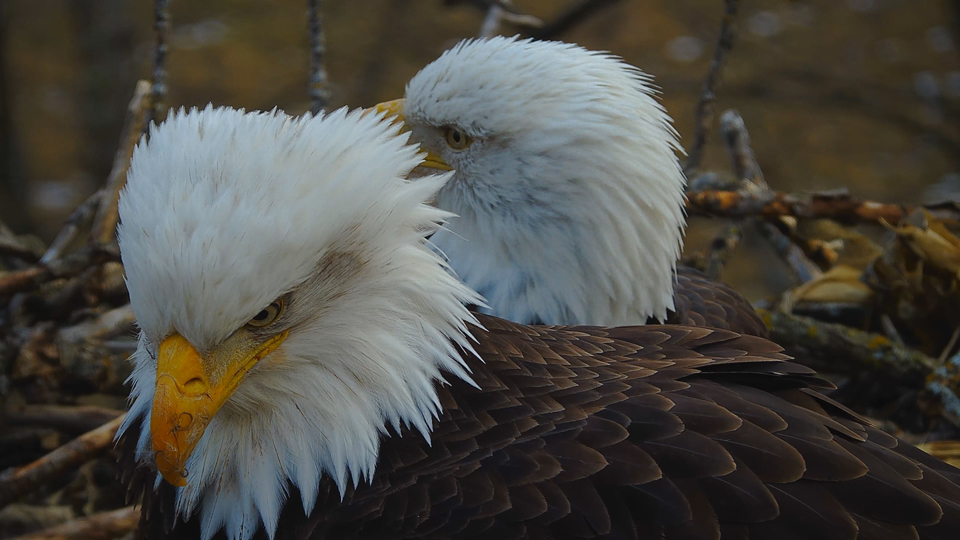 DNF and Mr. North try to locate the source of a strange sound below their nest
DNF and Mr. North try to locate the source of a strange sound below their nest
January 3, 2024: Pesky squirrel! https://youtu.be/9DrFKVNT9l4?si=XNfr5dotEHy3nOi2. Mr. North and DNF are enjoying a few moments of bald eagle domestic bliss when something interrupts them. The two go on high alert, although they appear to be paying more attention to the basement than the sky! DNF suddenly hop flaps up, knocking Mr. North off kilter. He teeters on the rim of the nest before settling on the bouncy branch, which she quickly returns to the nest and her hassenpfeffer lunch! Pesky squirrels!
Can squirrels eat bald eagle eggs? They sometimes take the eggs and nestlings of smaller birds and pilfer eagle nests for bedding and scraps. But squirrels don’t appear to take bald eagle eggs or nestlings – perhaps their gape is too small? – and they approach the nest at their own risk, although a tree is safer than the ground. Be careful, Lucky!
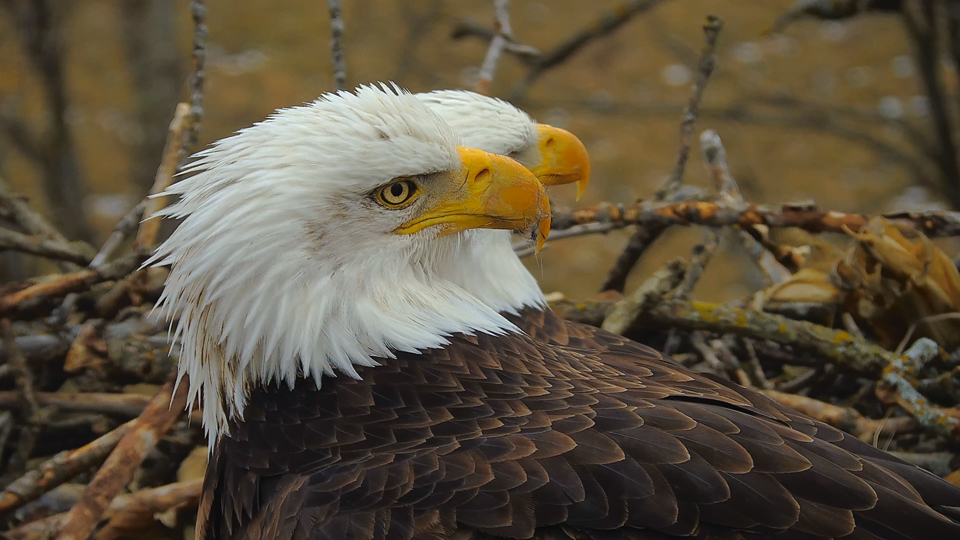 We can just see Mr. North’s beak here, but there were a few times you couldn’t see him at all behind DNF
We can just see Mr. North’s beak here, but there were a few times you couldn’t see him at all behind DNF
January 3, 2024: Think you’re seeing double? It’s just the Norths in sync! https://youtu.be/xVzYD38kh_A?si=jR9oem7XTSG5zjAX. There are a few spots in this video where it looks like we are looking at just one eagle! Listen for a woodpecker and what might be the chattering of a risk-taking squirrel while you admire DNF and Mr. North’s ability to move in time with one another!
January 2, 2024: GHO hits DNF – https://youtu.be/q19sGuJpI2k?si=EcAQc_PrOyTLu2Dv. DNF and Mr. North are slumbering in the Love Tree when a GHO hits DNF in the fifth second. She’s briefly turned around, although she holds on to the bark with her talons and vocalizes her protest as the GHO flies away, hooting. It takes her a while to settle down and her large eyes reflect IR candlelight as she searches through the darkness. Slow the video down as it happens, or go to 7:22 to see it there.
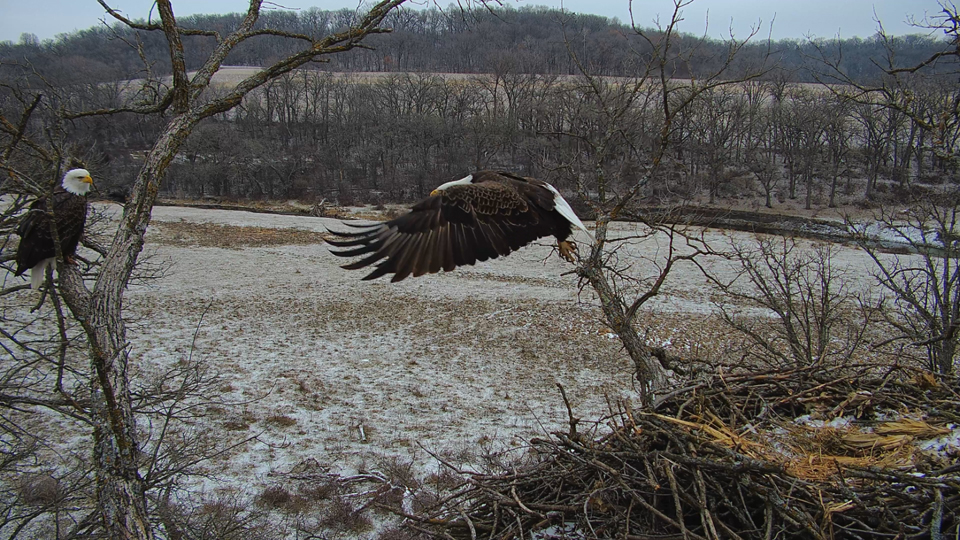 DNF joining Mr. North on the left side perch
DNF joining Mr. North on the left side perch
January 1, 2024: Beautiful DNF – https://youtu.be/wxuAIEWGaBs?si=UdI9HpR764dOBtnX. Heart eyes emoji! DNF is stunning! Look for especially beautiful close-ups at 1:23, a wonderful view of her nictitating eyelid at 2:21, and a scan of her entire body beginning at 2:40. She has a very full crop and the remains of dinner are still visible on her toes and footpad!
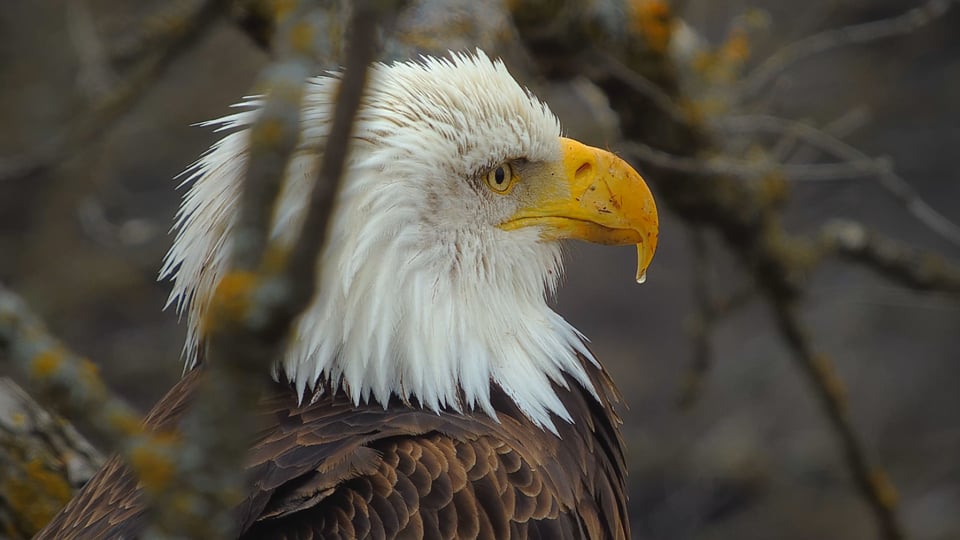 Beautiful DNF surveys her realm! The droplet on her beak might have been exuded from her salt gland, which provides an extrarenal route for salt removal.
Beautiful DNF surveys her realm! The droplet on her beak might have been exuded from her salt gland, which provides an extrarenal route for salt removal.
Note the drop of moisture on DNF’s beak when the video opens. Many species of birds have salt glands – an extrarenal route for excreting salt – near their eyes or nasal passages. Why do they need an extrarenal route for purging salt? As uric acid and fecal wastes move through a bird’s kidneys and lower intestines, water, sodium, and potassium are reabsorbed, conserving water and resulting in the thick white uric acid/faecal sludge we call a poop shoot. Salt glands provide an extrarenal way to remove the sodium that birds reabsorb.
Although the size and efficacy of salt glands vary from species to species, many birds of prey appear to use them based on work done by Cade and Greenwald. They noted that adult birds of prey don’t drink a lot of freshwater, and nestlings don’t drink any. The raptors they studied also tended to exude a fluid from their nares after finishing a meal – and, judging by her bulging crop, DNF had recently finished eating! More here: https://sora.unm.edu/…/condor/v068n04/p0338-p0350.pdf
January 1, 2024: Munching squirrel in Decorah – https://youtu.be/hOgP9wijtAU?si=z4kVM_cdxs2UQU2f. Lucky raids the nest again! I loved the close-ups of this intrepid fox squirrel gnawing on a corn cob in the North nest: its perky ears, beautiful red and grey fur, and beautiful dark eyes. While an eagle’s nest isn’t a safe place, its still safer than the bare ground between the woods and cornfield at the top of the North Valley.
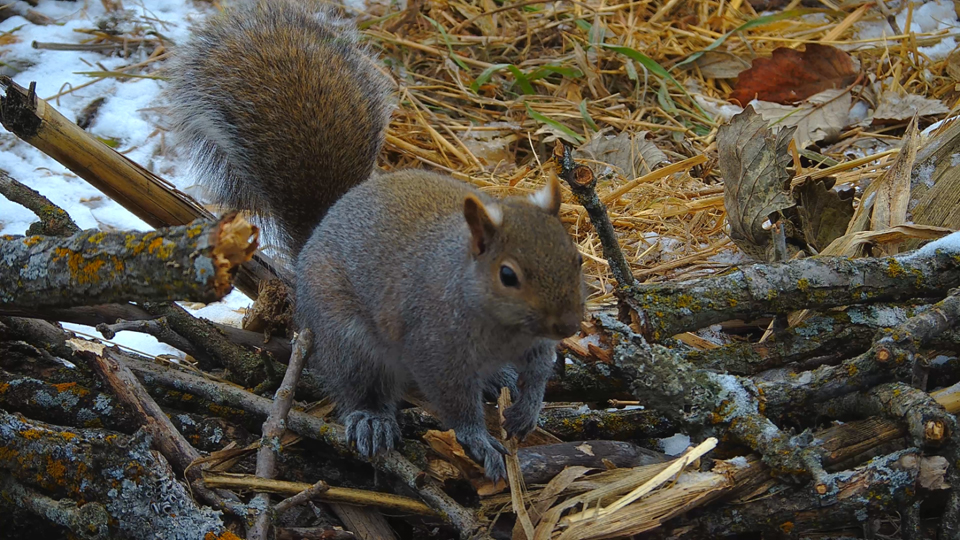 Could this be Lucky the squirrel, here seen raiding the nest for dry corn clinging to even drier cobs? The nest isn’t a safe place, but it’s safer than the open ground between the tree line and the corn stubble!
Could this be Lucky the squirrel, here seen raiding the nest for dry corn clinging to even drier cobs? The nest isn’t a safe place, but it’s safer than the open ground between the tree line and the corn stubble!
About forty-five days after mating in early winter, squirrels bear a litter of three to six pups in mid-to-late February. Squirrels in general are preparing for cold weather, deep snow, and lean foraging by eating and lining their nests. Female squirrels are also beginning to eat for four or more! Good luck, Lucky! Maybe we’ll see your busy, curious children in May.
 The Raptor Resource Project
The Raptor Resource Project The Raptor Resource Project
The Raptor Resource Project